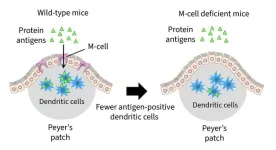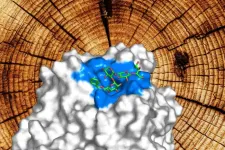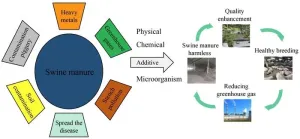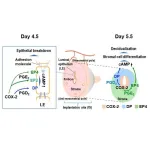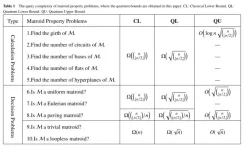(Press-News.org) [Strasbourg, 18th September 2024]
A new online tool designed to assess the equity of scholarly communication models is launched today at the OASPA 2024 conference. The “How Equitable Is It” tool, developed by a multi-stakeholder Working Group, comprising librarians, library consortia representatives, funders and publishers, and convened by cOAlition S, Jisc and PLOS, aims to provide a framework for evaluating scholarly communication models and arrangements on the axis of equity.
The tool, which was inspired by the “How Open Is It?” framework, is targeted at institutions, library consortia, funders and publishers, i.e. the stakeholders either investing or receiving funds for publishing services. It offers users the opportunity to rate scholarly communication models and arrangements across seven criteria:
Access to Read
Publishing immediate Open Access
Maximizing participation
Re-use rights
Pricing and fee transparency
Promoting and encouraging open research practices: data and code
Promoting and encouraging open research practices: preprints and open peer review
Key objectives
One of the primary ambitions of the Working Group was to develop something practical to help stakeholders assess scholarly communication models and arrangements on the axis of equity and to make this information available in ways which would facilitate easy comparison between different models. Rather than prescribing the outcome, users can rely on their own judgment as to how models or arrangements rate against equitable criteria: no pre-populated database of models, journals or arrangements sits behind the tool.
Robert Kiley, Head of Strategy at cOAlition S and one of the co-Chairs of the Working Group, commented: “While there is broad consensus that a model in which neither the author nor the reader pays a fee is more equitable than a subscription or APC-based approach, determining which other components make one model more equitable than another is challenging. The Equity Tool launched today helps users consider a range of criteria to move away from inequitable article-based models and arrangements to facilitate more equitable participation in knowledge sharing”.
Roheena Anand, Executive Director of Global Publishing Development & Sales at PLOS, and another of the Working Group’s Chairs, added: “We’re delighted to be launching this beta version of the Equity Tool. One of the strengths of the working group is its representation of multiple stakeholder views: funders, librarians and publishers. Many robust conversations between members led to this initial iteration, and we look forward to getting more feedback from the wider community”.
Anna Vernon, Head of Research Licensing at Jisc and also a co-Chair of the Working Group, expressed enthusiasm about the tool's potential impact: “At Jisc we are keen to use this tool to inform our community’s investment decisions in scholarly publishing”.
How the tool works
Based on the above-mentioned criteria, the “How Equitable Is It” tool prompts users to consider to what extent the model (and associated funding flow) they are assessing facilitates (or restricts) equitable participation in knowledge sharing. Users score each criterion on a scale from "least equitable" to "most equitable," receiving an overall equity score upon completion, along with a summary of their responses. A detailed description of the criteria and their definitions is available at: Framework_criteria_definitions.pdf
Feedback sought
The current release of the “How Equitable Is It?” tool is a beta version, open for comments and improvement. Stakeholders in the academic publishing ecosystem are encouraged to test the tool and provide feedback until the 28th October 2024 via the form https://coalitions.typeform.com/Equity-Feedback to help refine the criteria and increase its utility. The Working Group will review all input and publish a revised version in early 2025.
END
New tool to assess equity in scholarly communication models
2024-09-18
ELSE PRESS RELEASES FROM THIS DATE:
Research shows finger counting may help improve math skills in kindergarten
2024-09-18
Preschool teachers have different views on finger counting. Some teachers consider finger counting use in children to signal that they are struggling with math, while others associate its use as advanced numerical knowledge. In a new Child Development study, researchers at the University of Lausanne in Switzerland and Lea.fr, Editions Nathan in Paris, France, explored whether a finger counting strategy can help kindergarten-aged children solve arithmetic problems.
Adults rarely use their fingers to calculate a small sum (e.g., 3+2) as such behaviors could be attributed to pathological difficulties in mathematics or cognitive impairments. However, young children between ...
Proteins in meat, milk, and other foods suppress gut tumors
2024-09-18
Researchers led by Hiroshi Ohno at the RIKEN Center for Integrative medical sciences (IMS) in Japan have discovered that food antigens like milk proteins help keep tumors from growing in our guts, specifically the small intestines. Experiments revealed how these proteins trigger the intestinal immune system, allowing it to effectively stop the birth of new tumors. The study was published in the scientific journal Frontiers in Immunology on Sep. 18.
Food antigens get a lot of negative press because they are the source of allergic reactions to foods such as peanuts, shellfish, bread, eggs, and ...
Measuring how much wood a wood shuck shucks with all-new wood shuck food
2024-09-18
Researchers want to transform the natural and abundant resource wood into useful materials, and central to that is a molecular machine found in fungi that decomposes the complex raw material into its basic components. A Kobe University researcher and his team now were the first to come up with a test feed for the fungal molecular machine that allows them to observe its close-to-natural action, opening the door to improving it and to putting it to industrial application.
Biochemical engineers want to transform the abundant and renewable material wood into bioplastics, medically relevant chemicals, food additives or fuel. ...
AACR Cancer Progress Report highlights innovative research, novel treatments, and powerful patient stories
2024-09-18
PHILADELPHIA – Today, the American Association for Cancer Research (AACR) released the 14th edition of its annual Cancer Progress Report. This comprehensive report provides the latest statistics on cancer incidence, mortality, and survivorship. It also outlines how basic, translational, and clinical cancer research and cancer-related population sciences—largely supported by federal investments in the National Institutes of Health (NIH), the National Cancer Institute (NCI), the U.S. Food and Drug Administration (FDA), and the Centers for Disease ...
How do exogenous additives affect the direction of heavy metals and the preservation of nitrogen in pig manure compost?
2024-09-18
Most of the heavy metals in pig manure originate from feed additives, such as copper and zinc. When these heavy metals are introduced into agricultural soil, they can significantly increase the heavy metal content in crops, posing a threat to both the environment and human health. While pig manure is rich in nitrogen, an essential nutrient for crop growth, a substantial amount of nitrogen is lost in gaseous form during the composting process, impacting the quality of the compost. Moreover, this process results in the emission of ...
Breakthrough in fertility treatment: Prostaglandin receptors found to promote embryo implantation
2024-09-18
A team from Kumamoto University has uncovered a new mechanism that could revolutionize infertility care by promoting embryo implantation. The discovery focuses on prostaglandin (PG) receptors in the uterus that enhance the critical process of decidualization, which is necessary for a successful pregnancy. This finding opens the door to developing new fertility treatments that target these receptors.
Prostaglandins are bioactive lipids known for their role in body’s response to injury by causing fever and pain, but they are also crucial in reproductive ...
What numbers do you see? A new bistable perceptual phenomenon on symbolic numbers
2024-09-18
Perceptual recognition of numerical characters, like Arabic numerals, is indispensable for our daily activities in the modern society. Studying the perceptual and neural mechanisms that endow us with the ability to understand those characters is an important scientific topic. In this project, researchers explored a bistable perceptual phenomenon of a specially designed character named occluded digital numeral, to get a deeper understanding of the mechanisms underpinning the perceptual recognition of numbers.
The digital numeral is a special version of number fonts designed for application in electronic products ...
Quantum speedup and limitations on matroid property problems
2024-09-18
Quantum computers show advantages over classical computers in some problems, such as unordered data base searching and prime factorization. Finding more problems that can take quantum speedup has become one of the focus problems in quantum computing. Before this, there is no research work on the quantum query complexity and quantum algorithm for matroid problems. It is interesting and meaningful to search for structures that can take quantum advantage in matroid problems.
In order to study the possibility and limitation of acceleration of quantum computing in matroid problems, a ...
Unravelling an ancient European extinction mystery: Disappearance of dwarf megafauna on palaeolithic Cyprus
2024-09-18
Scientists have unravelled a mystery about the disappearance of dwarf hippos and elephants that once roamed the picturesque landscape on the Mediterranean island of Cyprus before palaeolithic humans arrived.
Cyprus only had two species of megafauna present during the Late Pleistocene — the 500-kg dwarf elephant (Palaeoloxodon cypriotes), and the 130-kg dwarf hippo (Phanourios minor), but both species disappeared soon after humans arrived around 14,000 years ago.
In examining the reasons behind the extinction of these prehistoric animals, research funded by the European Regional Development Fund and the Republic of Cyprus through the Research and Innovation Foundation ...
Highly-sensitive beaks could help albatrosses and penguins find their food
2024-09-18
Researchers have discovered that seabirds, including penguins and albatrosses, have highly-sensitive regions in their beaks that could be used to help them find food. This is the first time this ability has been identified in seabirds.
An international team of researchers, led by the University of Cambridge, studied over 350 species of modern birds and found that seabirds have a high density of sensory receptors and nerves at the tip of their beaks, which has been previously identified in specialised tactile foragers such as ducks.
The researchers say this touch-sensitive region could have come from a common ancestor, and further work is needed to determine ...
